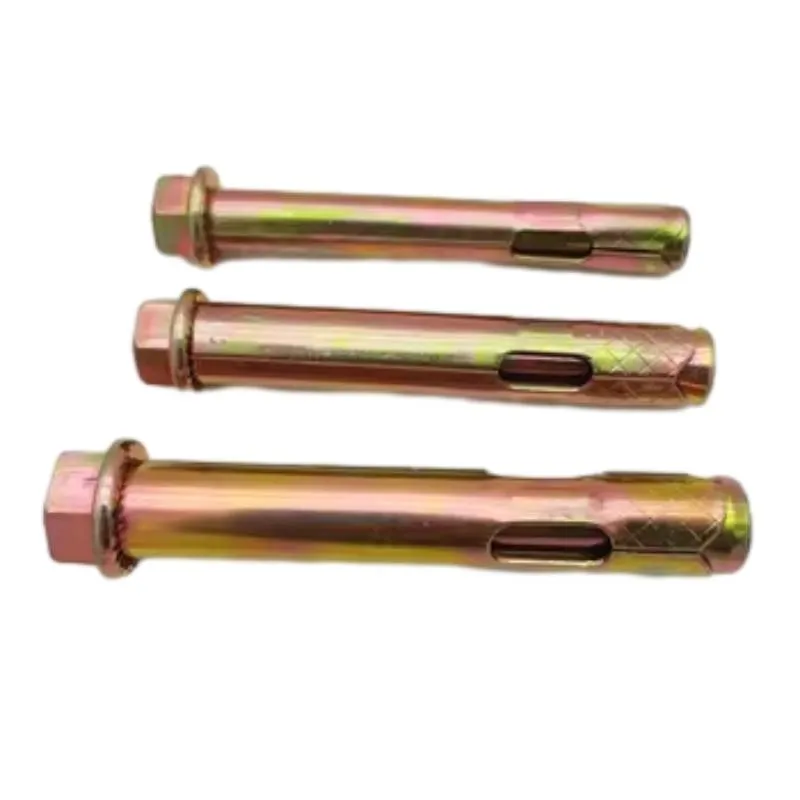अगस्त . 13, 2024 03:22 Back to list
Understanding M22 Nut Dimensions and Sizes in Millimeters for Various Applications
Understanding M22 Nut Size in Millimeters
When it comes to fastening components in mechanical applications, choosing the correct nut size is crucial for ensuring safety, stability, and operational efficiency. The M22 nut, specifically, is a widely used size in various engineering and construction projects. But what exactly does M22 mean, and why is it important to understand its dimensions in millimeters?
Definition of M22 Nut Size
The designation M22 indicates that the nut has a nominal metric diameter of 22 millimeters. The M stands for metric, which is an international standard that is widely adopted across various industries. Understanding the M22 designation helps engineers and technicians select the right components that match the specifications required for their projects.
Dimensions and Specifications
The primary dimension of the M22 nut is its width across flats (the distance between two parallel sides), which is essential for the tool engagement when bolting or unbolting. For an M22 nut, the width across flats generally measures 32 millimeters. This size allows it to be operated with standard wrenches or sockets designed for that particular measurement.
Another critical dimension of the M22 nut is its thickness. Typically, a standard M22 nut has a thickness of about 12.5 millimeters, although this can vary slightly depending on the manufacturing standards and the specific type of nut being used, such as a hex nut or a lock nut.
Additionally, M22 nuts come in different grades, which indicate their strength and material properties. Common materials include carbon steel, stainless steel, and sometimes even brass or plastic for lighter applications. The grade of the nut will determine its resistance to tensile and shear forces, which is critical when considering the load that will be placed on the nut and its corresponding bolt.
m22 nut size in mm

Applications of M22 Nuts
M22 nuts find applications in a variety of sectors, including automotive, construction, and heavy machinery. In the automotive industry, they are often used to secure parts of the vehicle’s chassis or suspension system. In construction, M22 nuts might be employed in bolting structural components together, ensuring that the connections are secure and capable of withstanding heavy loads.
Moreover, the versatility of M22 nuts makes them suitable for use in high-stress environments. Their size and strength allow them to handle substantial forces, making them a preferred choice for many engineers and designers.
Importance of Proper Selection
Selecting the right nut size, including the M22, is crucial to the overall integrity of the assembly. An improperly sized nut can lead to a failure in a joint, potentially resulting in costly repairs or even hazardous situations. Engineers must also consider the type of bolt used with the nut, ensuring compatibility in terms of thread pitch and diameter.
Furthermore, environmental factors such as corrosion resistance can also dictate the choice of material for the M22 nut. For example, stainless steel M22 nuts may be chosen for projects exposed to moisture or chemicals to prevent rust and degradation over time.
Conclusion
Understanding the M22 nut size in millimeters is vital for anyone involved in mechanical design and assembly. Its dimensions, strength grades, and material options make it an essential component in various applications. By ensuring the proper selection and application of M22 nuts, professionals can maintain safety and reliability in their engineering endeavors. Overall, paying attention to the specifications of nuts–like the M22–can lead to greater efficiency and performance in mechanical structures.
-
The Ubiquitous Reach of DIN934 in Application Realms
NewsMay.16,2025
-
Exploring Different Bolt Types
NewsMay.16,2025
-
Cracking the Code of Sleeve Anchor Mastery
NewsMay.16,2025
-
Clamp Design Principles,Types and Innovations
NewsMay.16,2025
-
Artistry Inspired by the Humble Anchor Bolt
NewsMay.16,2025
-
A Deep Dive into Screw Types
NewsMay.16,2025


